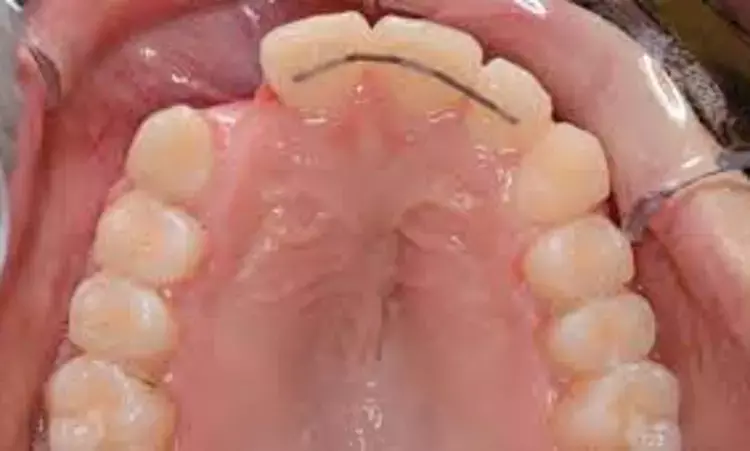- Home
- Medical news & Guidelines
- Anesthesiology
- Cardiology and CTVS
- Critical Care
- Dentistry
- Dermatology
- Diabetes and Endocrinology
- ENT
- Gastroenterology
- Medicine
- Nephrology
- Neurology
- Obstretics-Gynaecology
- Oncology
- Ophthalmology
- Orthopaedics
- Pediatrics-Neonatology
- Psychiatry
- Pulmonology
- Radiology
- Surgery
- Urology
- Laboratory Medicine
- Diet
- Nursing
- Paramedical
- Physiotherapy
- Health news
- Fact Check
- Bone Health Fact Check
- Brain Health Fact Check
- Cancer Related Fact Check
- Child Care Fact Check
- Dental and oral health fact check
- Diabetes and metabolic health fact check
- Diet and Nutrition Fact Check
- Eye and ENT Care Fact Check
- Fitness fact check
- Gut health fact check
- Heart health fact check
- Kidney health fact check
- Medical education fact check
- Men's health fact check
- Respiratory fact check
- Skin and hair care fact check
- Vaccine and Immunization fact check
- Women's health fact check
- AYUSH
- State News
- Andaman and Nicobar Islands
- Andhra Pradesh
- Arunachal Pradesh
- Assam
- Bihar
- Chandigarh
- Chattisgarh
- Dadra and Nagar Haveli
- Daman and Diu
- Delhi
- Goa
- Gujarat
- Haryana
- Himachal Pradesh
- Jammu & Kashmir
- Jharkhand
- Karnataka
- Kerala
- Ladakh
- Lakshadweep
- Madhya Pradesh
- Maharashtra
- Manipur
- Meghalaya
- Mizoram
- Nagaland
- Odisha
- Puducherry
- Punjab
- Rajasthan
- Sikkim
- Tamil Nadu
- Telangana
- Tripura
- Uttar Pradesh
- Uttrakhand
- West Bengal
- Medical Education
- Industry
Bonded retainers best vacuum-formed retainers to maintain incisor alignment in maxilla and mandible after 12 months of retention: Study

Bonded retainers are best vacuum-formed retainers in maintaining alignment of incisors in the maxilla and mandible after 12 months of retention suggests a study published in the Orthodontics and Craniofacial Research.
A study compared the clinical effectiveness of V-bend bonded retainers (BR) versus vacuum-formed retainers (VFR) regarding their capacity to maintain treatment stability and survival rates after 12 months. Patients finishing orthodontic treatment were randomly allocated into two groups. The Bonded retainers group received maxillary and mandibular BRs in the lingual surfaces of the anterior teeth. The VFR group received VFRs right after fixed appliance removal. The patients were evaluated at four time points: at fixed appliances removal (T0), after 3 (T1), 6 (T2) and 12 months (T3). In each time-point digital models were obtained and analysed with the OrthoAnalyzer™ software. Treatment stability based on occlusal outcomes and retainers' survival rates were evaluated. Intergroup comparisons were performed using Mann–Whitney U-tests. The Kaplan–Meier survival plot and the log-rank test assessed the retainers' survival.
Results: Both Bonded retainers and VFR groups included 25 patients. The groups were comparable regarding their baseline characteristics. Up to 6 months, both retainers were equally effective; however, after 12 months, Bonded retainers were more effective in maintaining the incisors' alignment in the maxilla and mandible than the VFRs. No differences were noticed in the intercanine and intermolar widths, overjet and overbite. There were no differences regarding the retainers' survivability in both arches. Bonded retainers were more effective in maintaining the alignment of the incisors in the maxilla and mandible compared to VFRs after 12 months. Both retainers presented the same survival rates after the same period.
Bellini-Pereira SA, Aliaga-Del Castillo A, Vilanova L, et al. Treatment stability with bonded versus vacuum-formed retainers after 12 months in adolescents and young adults: A randomized clinical trial. Orthod Craniofac Res. 2024; 00: 1-9. doi:10.1111/ocr.12753
Keywords:
Bonded retainers, vacuum-formed retainers, alignment, incisors, maxilla, mandible, retention, Bellini-Pereira SA, Aliaga-Del Castillo A, Vilanova L, Orthodontics and Craniofacial research
Dr. Shravani Dali has completed her BDS from Pravara institute of medical sciences, loni. Following which she extensively worked in the healthcare sector for 2+ years. She has been actively involved in writing blogs in field of health and wellness. Currently she is pursuing her Masters of public health-health administration from Tata institute of social sciences. She can be contacted at editorial@medicaldialogues.in.
Dr Kamal Kant Kohli-MBBS, DTCD- a chest specialist with more than 30 years of practice and a flair for writing clinical articles, Dr Kamal Kant Kohli joined Medical Dialogues as a Chief Editor of Medical News. Besides writing articles, as an editor, he proofreads and verifies all the medical content published on Medical Dialogues including those coming from journals, studies,medical conferences,guidelines etc. Email: drkohli@medicaldialogues.in. Contact no. 011-43720751


